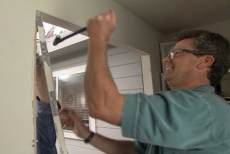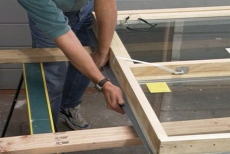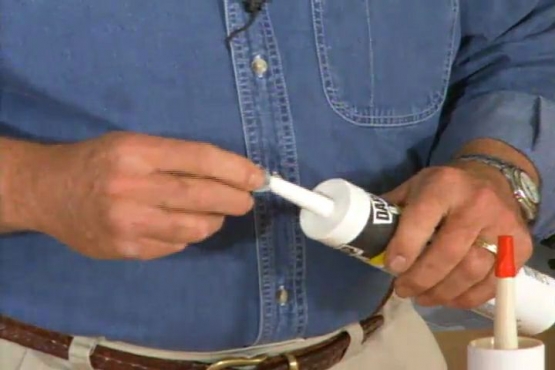How to Retro-fit a Window
Do a Little Demolition to Resize the Window Opening and Retro-fit an Inefficient Window with a Double-hung Double-glazed Replacement
Retro-fit an existing sliding window with a double-hung double-glazed replacement. If it's a different size from the original, the project will require removing the window frames and wooden siding to custom fit the old window opening prior to installing the new window. Once this project is successfully completed, retrofitting your remaining windows should be a breeze.

Remove Old Window and Trim for the Window Retro-fit Project
Begin the retro-fit by prying up and retaining existing trim for reuse. Remove the moving glass panes. Cut away the window flange, any exterior siding that covers it and the two-by-four on which the old window rests.

Increase the Height of the Opening for the Window Retro-fit
Measure the new window and opening to assess fit. This window opening is too short for the retro-fit, so create extra height by breaking out the perimeter wallboard. Remove the corner bead without damaging the interior wall.

Narrow the Window Opening to Prepare for the Window Retro-fit
Decrease the opening width to accommodate the new retro-fitted window. Fill in the extra width with strips of exterior-grade lumber on each side. Layer outward to reach the desired dimension and secure the strips with a pneumatic nail gun.

Prepare and Position the New Window for the Retro-fitted Project
Bend the new window's nailing flanges outward. Run exterior caulking down the center of each flange as part of the window retro-fit. Set the bottom edge in place and tip the centered window upward to contact the frame.

Level and Secure the New Window for the Retro-fit Project
Plumb and level the new window using a bar level. Insert shims as necessary for the window retro-fit. Hold the positioned window in place and secure it with rust-resistant galvanized roofing nails driven through the flange, shims and framing.

Cover the Gaps and Caulk for the Window Retro-fit
Seal the gaps at the corners of the window flanges with self-adhesive rubber corner seals. Insert strips of roofing paper around the perimeter of the retro-fitted window and where the roofing paper meets the siding.

Replace the Original Trim for the Window Retro-fit
Fill remaining hollows with nailed strips of exterior lumber to bring the surface flush with the exterior of the house. Replace the original exterior trim removed earlier in the window retro-fit project. Secure it with rust-resistant finish nails.

Add Caulk around the Trim to Seal the Window Retro-fit
Squeeze a bead of exterior-grade caulk around the trim, sealing the gap between it and the siding. Smooth out the bead with your finger, forcing the caulk into the grooves of the siding to complete work on the outside of the window retro-fit.

Add Interior Jamb Extensions for the Window Retro-fit
Install jamb extensions to the retro-fitted window, working from the interior of the house, to bring the surface of the jamb flush with the wall. Attach the jamb extensions with a pneumatic pin nailer.

Nail up Interior Molding to Complete the Window Retro-fit
Secure mitered strips of interior molding with the pneumatic pin nailer to cover the jamb extensions. Dress the nail holes and paint as necessary to complete the final part of the window retro-fit.
Related Tips
Blog Articles
Maximize Your Yield with DIY Netting for Strawberry Beds
Keep your strawberries safe from pests with our DIY strawberry cage netting solution. Learn how to create sturdy frames and find the best netting for your strawberry plants.
Change It Up: Swapping Out Your Light Switch Plates
Tired of boring light switch covers? Upgrade your home decor with this simple guide on replacing light switch plates and make a statement in every room.
Revamp Your Outdoor Space: How To Stencil A Concrete Patio
Learn how to create a stunning patterned concrete patio with our easy-to-follow instructions for stenciling. Upgrade your outdoor space in no time.












